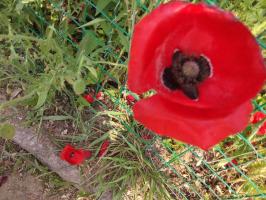1、 Seed reproduction
1. Selection and treatment of seeds
The selection of seeds should be combined with the mother plant of Jishiteng. In order to raise the next generation with good growth, the mother plant should also grow well. For example, the shape should be beautiful, the leaves should be dense and have not been disturbed by diseases and pests. Selecting the seeds of Jishiteng to plant can first ensure the quality of seeds
Generally, the mature fruits of Jishiteng are picked in October and November every year, and then they are stacked together until they decay. After decay, the skin of the fruit is rubbed off by hand to get seeds. Select the seeds after getting them. Generally, plump seeds will be selected, which can ensure that there are enough nutrients in the seeds to grow. After screening, save the seeds with moist sand and sow them the next year

2. Sowing method
In the next spring, that is, in March or April, the seeds of Jishiteng can be sown. When sowing, dig a pit about 7 cm deep on the ground. The length and width of the pit are controlled at about 30 cm to allow sufficient growth space for seeds. Then put about 10 seeds evenly in the pit, fill them with soil, and then cover the soil with a layer of plant ash

2、 Cutting propagation
1. Selection and treatment of stems and vines
In February or March of each year, the rattan used for cutting propagation shall be selected. When selecting, the old rattan with a growth age of about 2 years shall be generally selected. The old rattan shall not have diseases and insect pests, and its growth shall be very healthy, so as to improve the success rate of cutting. After selection, reduce the length of stems and vines to about 30 cm, and ensure that there are 3 or more cuttings. Such stems and vines are the best
2. Stem cutting
After selecting the appropriate stems and vines, you can carry out cutting. When cutting, you should first dig a pit about 20 cm deep in the soil, with a width and length of about 30 cm. Each pit can be filled with three stems and vines, and each cutting should ensure at least one bud node


 how many times do yo...
how many times do yo... how many planted tre...
how many planted tre... how many pine trees ...
how many pine trees ... how many pecan trees...
how many pecan trees... how many plants comp...
how many plants comp... how many plants can ...
how many plants can ... how many plants and ...
how many plants and ... how many pepper plan...
how many pepper plan...































